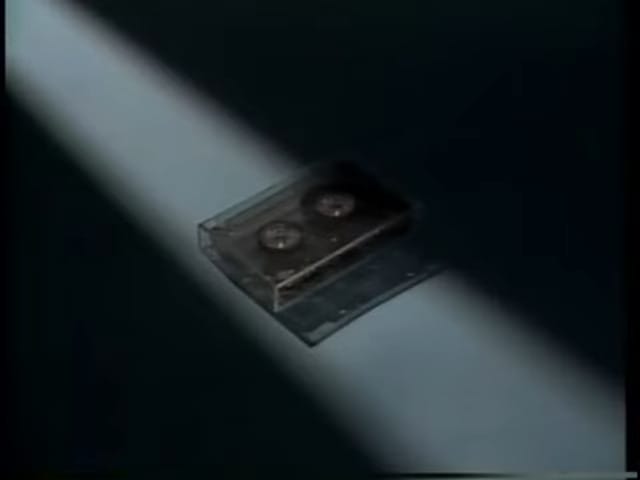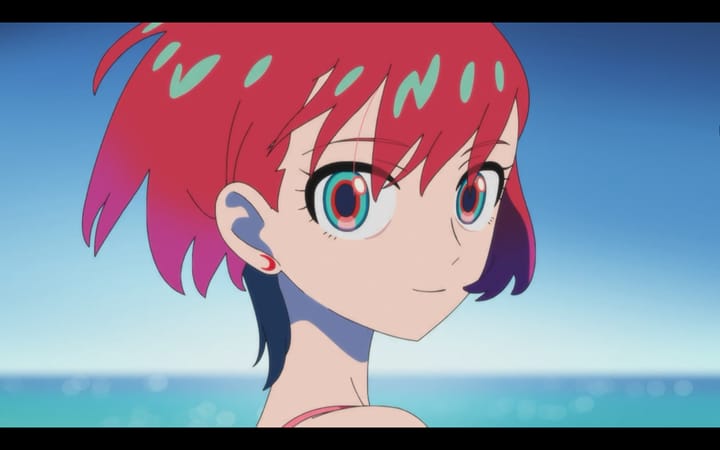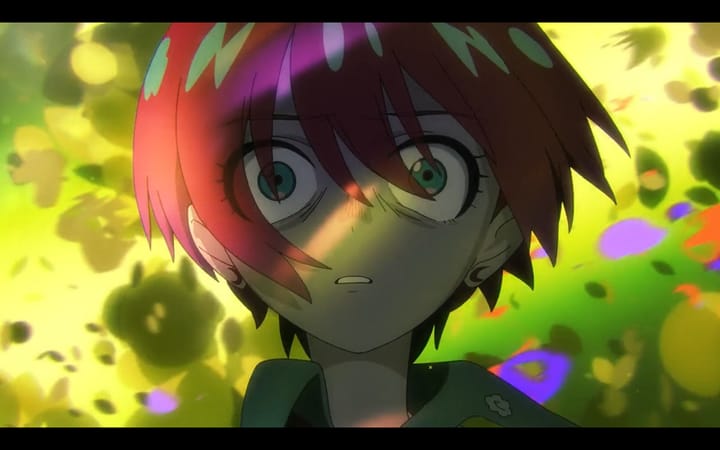Looking Back at Look Back
No matter how good you are, even if you have the style and sense of humor of a grade schooler, you possess the capacity in some form to make art right now.
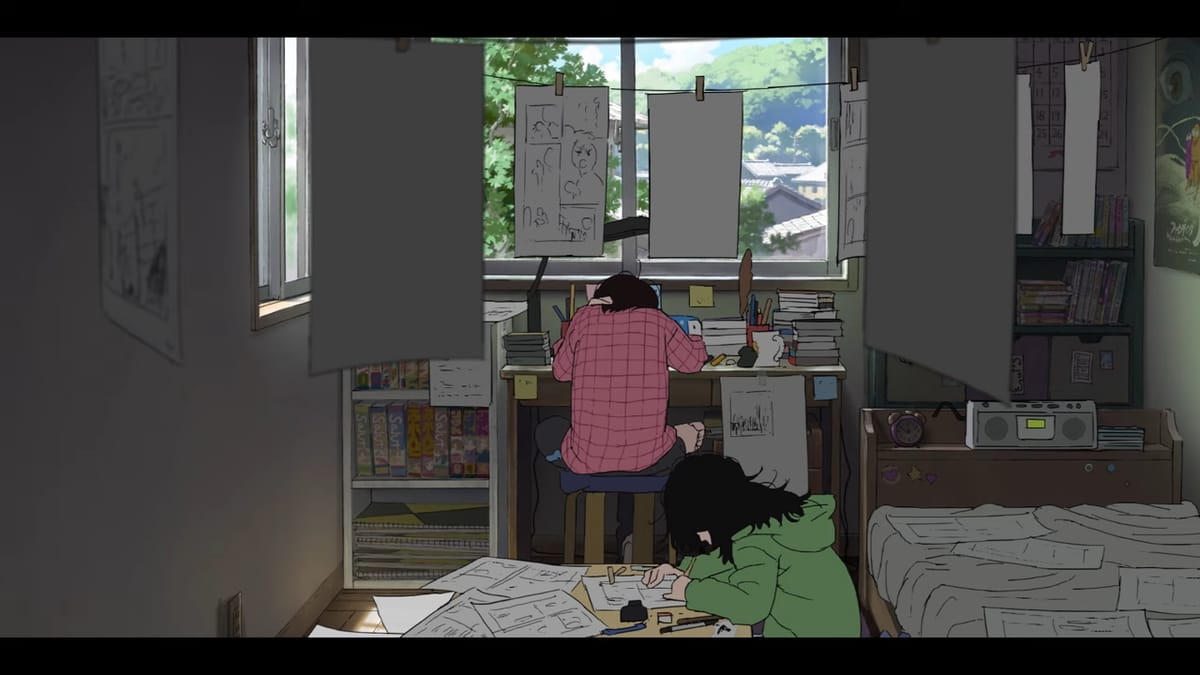
Welcome to ANIWIRE! This week we’re talking about the new film Look Back and generative AI. Before that, though, here’s the news from the past week or two.
News
- The first episode of the long-anticipated horror series Uzumaki came out, and it’s pretty great! Unfortunately the second episode came out and is nowhere near as good. In fact these two episodes do not share directors or even majority creative staff. Curious to see if somebody will do the terrifying journalistic deep dive this show deserves one day in the future to find out what happened: here’s a first attempt at Anime News Network.
- According to the new Japanese pop culture website scrmbl, Jump Plus editor and hitmaker Shihei Lin left the publisher Shueisha two years ago (per his Twitter.) He’s still there as a freelancer, but perhaps we’ll see something even more ambitious from him in the future…
- Hideaki Anno announced a new work affiliated with the legendary science fiction property Space Battleship Yamato (better known in the United States as Star Blazers.) This is all well and good, but when are we getting an original series directed by Kazuya Tsurumaki, Anno?!
- AnimEigo announced that they are licensing the film Nasu: Summer in Andalusia, for release in March 2025. A great (if fairly short) movie by talented staff, made at the peak of studio Madhouse’s powers and adapted from a manga by my fave Iou Kuroda.
- This October 7th is the 20th anniversary of Beck: Mongolian Chop Squad, the beloved-rock-and-roll anime by dearly departed director Osamu Kobayashi.
Bookmarks
- Lots of great stuff on the new site scrmbl, including this interview by Alicia Haddick with the team reinventing Gegege no Kitaro as a survival horror game.
- Over on YouTube, Babsago made a video about various Japan-only “girl games” in which you play as nurses, manga artists, kindergarten teachers etc.
- At artist_unknown, Nate AM interviewed Christophe Ferreira, Justin Leach and Katrina Minett regarding their contributions to the upcoming anime Leviathan.
- Kambole Campbell reviewed Look Back, and also interviewed its multi-talented director Kiyotaka Oshiyama.
- For Sakuga Blog, Kevin Cirugeda wrote about the weird new action series Dandadan, a show with a great theme song.
What I Wrote
- For Anime Herald, I wrote about the extensive music career of composer/musician/voice actor Ichiko Hashimoto.
- For Yatta-Tachi, I interviewed Deb Aoki about her role organizing the American Manga Awards. I also talked to Evan Minto, the co-founder of manga app Azuki.
- For KComicsBeat, I reviewed the fantasy webcomic series Wait Where the Shooting Star Falls as well as the wild romantic thriller Guardians of the Lamb.
AMV of the Week
Here’s "Band of Delinquents" by cagayakegirlz.
I’ve been having an ongoing argument with a friend about generative AI. To them, it’s another technology to be mastered. Ignoring it means willfully falling behind while everybody else rushes forward. Why hold back when the world is so competitive? It’s tough enough already to be accepted as an artist. Refusing this one tool, which could improve or at least speed up your output, indicates a lack of seriousness, they say. Use every advantage available to you or die.
There are a few different ways that I could respond to this. The first is that the energy cost of generative AI presents a significant environmental risk. Unless the technology is made much more energy efficient, it will at the very least lock in permanent destructive climate change at a crucial moment. Of course, part of the problem with generative AI (along with other modern technology like cloud computing) is that its very convenience disguises the cost. Trade is always easy if you don’t actually look at the trade you’re making.

Another way I could respond is that modern generative AI, at heart, a Ponzi scheme. While the technology has niche cases in which it can be very useful (as scholars like Michael Cook have insisted), it has been sold as a cure-all by grifters like OpenAI’s Sam Altman. As far as he’s concerned, today AI can do almost anything, in the future it will do everything, and investors with cold feet will regret it later. I recommend checking out Ed Zitron’s newsletter for further business analysis.
Neither of these things, though, is what makes my heart hurt the most. What kills me about generative AI is how it exposes the distance between myself and friends who I thought saw eye to eye with. Not in terms of whether or not we agree on technology; that’s a separate matter. But in terms of how we perceive art.
I believe that art is subjective rather than objective. Certainly there are criteria by which you can judge if a work “succeeds” or “fails.” But it's all up in the air at the end of the day. Changing tastes, marketing, even society itself does as much to determine a piece’s reception as essential qualities. Did William Shakespeare become a literary icon because his work is transcendently, self-evidently good, or because he captured the hearts of 1700s Romantics who saw his imperfections as a strength rather than a weakness? What happens if you separate his plays from their historical or cultural context?
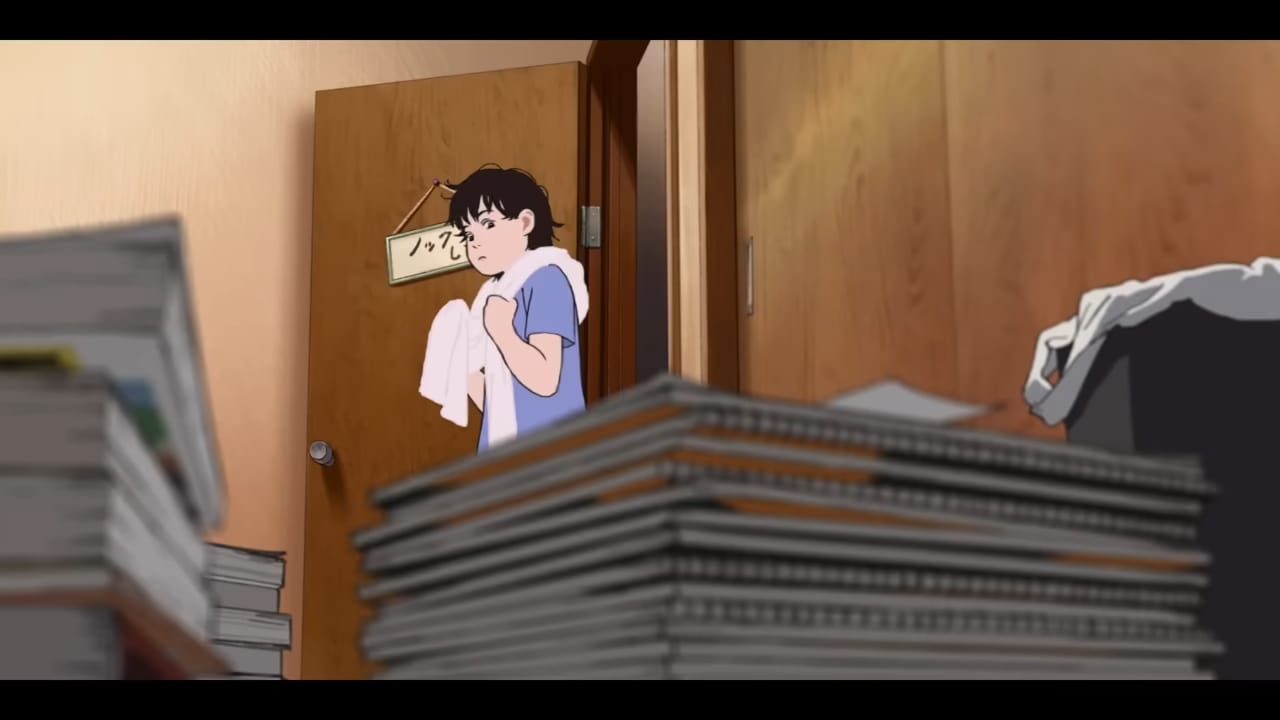
In the face of generative AI, though, I can’t help but feel like a hypocrite. There are clear objective differences to me between works made by these programs (as they currently exist) and works made by real people. A poem put out by generative AI will never be as snappy as a goofy little number you write in five minutes. Whether or not it’s any “good,” the thing you make at least communicates something about you. That quality is far more endearing, to me, than the novelty of a computer scrapping something together in the space of a second from other people’s language.
Other people seemingly can’t tell the difference. I heard a story from a family member whose friend wrote a poem via generative AI as a birthday gift. They didn't realize until they read the poem out loud that it wasn't very kind to the friend. Did they bother to read it in advance? What were they trying to communicate? My only conclusion is that they didn’t think about it. The poem itself didn’t matter. The brain takes the shortcut, “a poem must be meaningful,” and forgets what they really want to say, which is “Happy birthday, friend.”
I say all this as if human-made art is inherently meaningful. But that’s not quite right. Valorizing art for its own sake, after all, can lead to crap like this annoying Zen Pencils strip. (My heart is with Kris Straub’s response.) There’s nothing particularly glamorous about art-making. In my experience, it can be like taking a dump. You give structure to the feelings swirling inside you and excrete it as an object separate from yourself. Even the most beautiful art in the world is the product of this embarrassing, sometimes even excruciating process.

There’s a film I saw yesterday called Look Back, based on Tatsuki Fujimoto’s comic of the same name. Its heroine, Fujino, begins her story as a grade school student who loves to draw comics. Her work is the kind of silly stuff you’d expect from a kid. For instance: a man and a woman get in a car accident. “Let’s kiss one more time,” the man says, “before we are reborn!” Some time later, the woman is reborn as a child, grows up once again and then regains her past memory. “Where is my love!?” she asks herself. Well, as it turns out, her love was reborn as a meteor who destroys the earth. The end.
I drew comics just like this too when I was younger. There’s one I remember from middle school: George of the Jungle is swinging through the trees. (I grew up in the 90s, alright? I loved the movie.) All of a sudden, just when you least expect it, he is impaled by a jet plane. “Augh!” he says. Then Death appears, who says, “bet you didn’t expect that one, huh?” I made my middle school science teacher laugh with that one.

Fujino’s friends have spent her entire childhood praising her for the art she makes. Because she’s young and ambitious, because her drawings are always in the school newspaper, her classmates and teachers treat her with respect. But that respect evaporates quickly. One day another student, Kyomoto, contributes a strip alongside Fujino. Kyomoto’s art is so detailed and evocative that Fujino’s doodles look even worse by comparison.
After everything she’s been through, Fujino cries, how could somebody beat her so easily? A truant student, at that? But it isn’t just her own feelings of inferiority that dog at her. It’s her rude classmate that sits next to her. “You know what?” he says. “Compared to Kyomoto, Fujino, your drawings are average.” Being average is Fujino’s worst fear. At first she fights valiantly against it. Then, at the end of her rope, she nearly quits drawing forever. It’s better to not be an artist, she thinks, than to be mediocre.
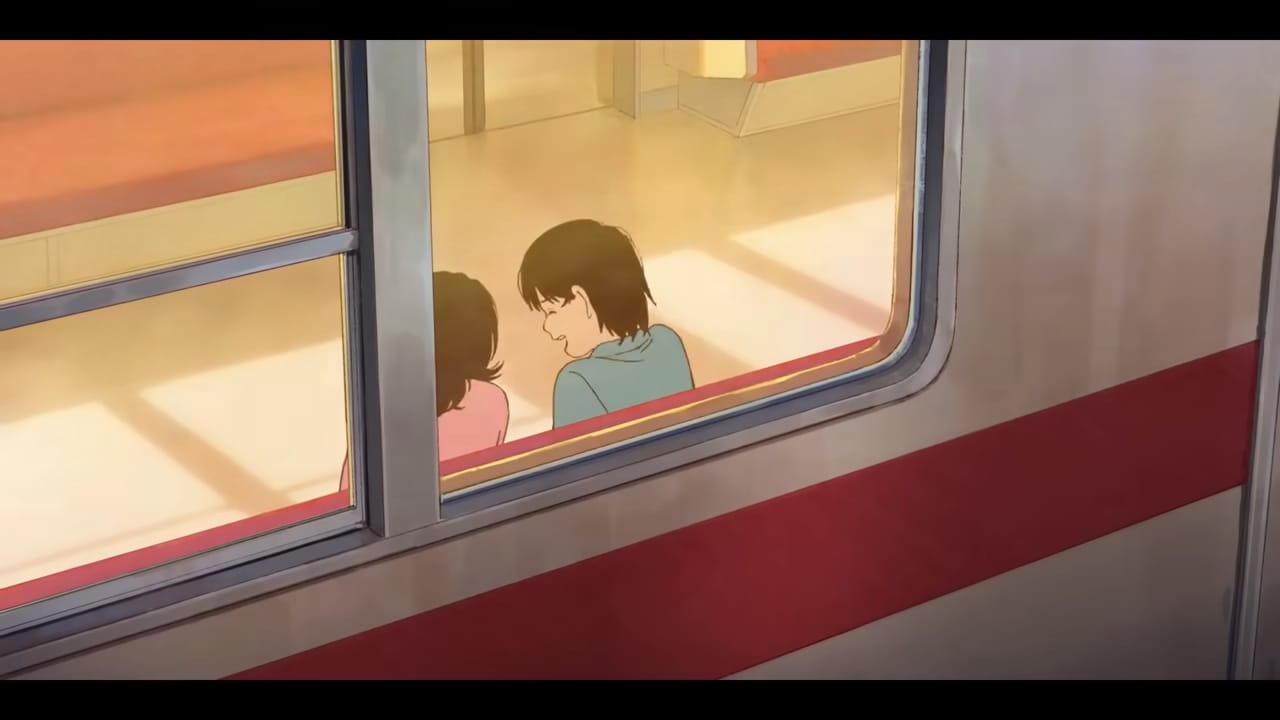
Is Fujino so mediocre, though? Certainly we can see the difference between Fujino and Kyomoto’s work on the page. Fujino’s comics are four-panel joke strips with conventional punchlines. Kyomoto by comparison draws beautiful illustrations of local scenery. Kyomoto’s work is undoubtedly beautiful and very advanced for her age. Yet Fujino’s silly comics are entertaining in their own way. At the very least, Fujino shows discipline in building each of her strips around a funny gag, and imagination in brainstorming new ideas to make her audience laugh.
The film plays up the difference between these two artists even further. Kyomoto’s art appears in Fujino’s imagination as lavish, beautiful environments. Fujino’s comics are goofy drawings that obey cartoon physics. You can understand why Kyomoto’s work makes such an impression on Fujino. But Fujino’s work has its own appeal.
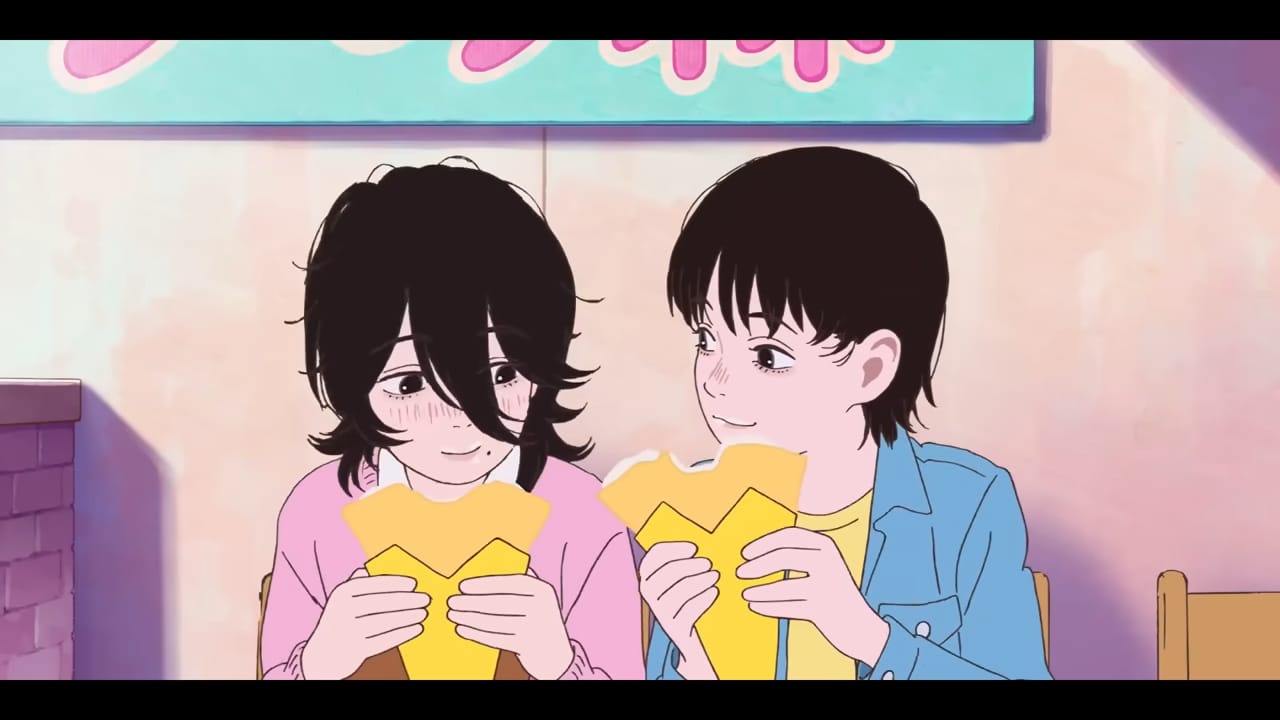
You know this because the story does the work for you. One day, after she’s decided to give up drawing, Fujino meets Kyomoto for the first time. Fujino expects to find a rival. Instead she finds her number one fan. Kyomoto loves Fujino’s work so much that she can describe her favorites by name and date. If a genius like Kyomoto is a Fujino fan, that must mean that there’s something to Fujino’s silly comics after all. Right?
Well, who knows about that. Fujino’s friends at school gave up on her comics. First they decided that Kyomoto was a better artist. Then they asked Fujino herself to spend less of her time drawing, so that she wouldn’t look like so much of a creep. The only conclusion I can come to is that these children never saw Fujino in her comics at all. They only ever thought of them as disposable paper to read and then throw away.
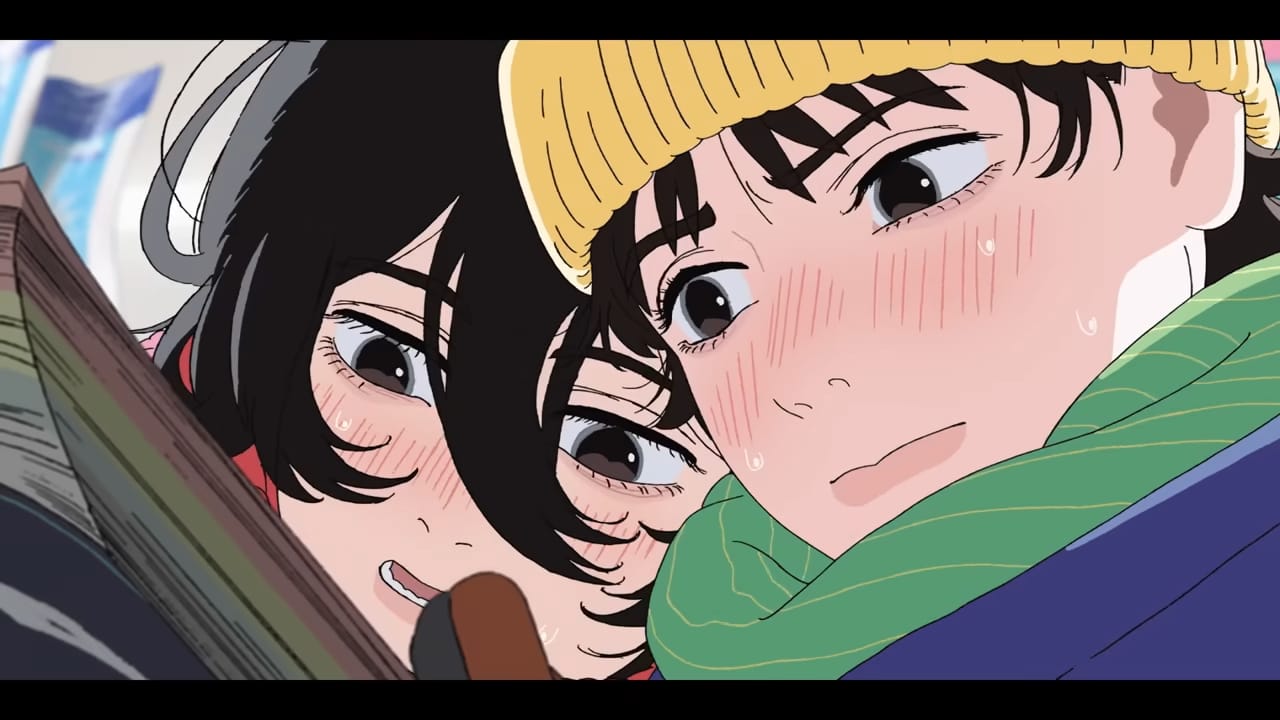
Everybody in the world has their passions. For some it’s drawing. For others it’s making music, or cooking, or building houses made out of Legos. This is perfectly fine. There’s no reason why folks should like everything equally. But speaking from my own experience, it can be profoundly lonely (especially as a kid) when nobody else in your community sees the world the same way you do. When they dismiss what you value as frivolous, even though they might very well be.
Kyomoto is an artist, though, who approaches comics as a reader and craftsperson. She has the eye. So she spots Fujino in her drawings right away. Having been acknowledged, Fujino skips away from Kyomoto’s house driven not by her own pride but by all-consuming joy. Kyomoto sees her! There is no greater high in the world.

In an interview following the release of the film, director Kiyotaka Oshiyama positions Look Back as a response to generative AI. A tribute to hand-made things and the people that make them. Every frame bears the love and obsession that comes with sitting down at a desk and engaging in months of painstaking monotonous work. We see the characters do the same thing in the movie. Often it is hard and boring. At other times, as we see, it is like running through the water into gradient sunlight.
I’m convinced after seeing Look Back that Oshiyama is a genius. But the good news is that we don’t all have to be at his level, or at Tatsuki Fujimoto's level, or even adult professional Fujino’s level. Art is subjective after all. No matter how good you are, even if you have the style and sense of humor of a grade schooler, you possess the capacity in some form to make art right now. Even bad art. Then you can share it with a friend, and communicate something.
That is our shared fundamental freedom, our collective proof of being alive. I will never give it up, not until my rotting bones are tangled deep under power cords beneath the sunlight waves of the future.
